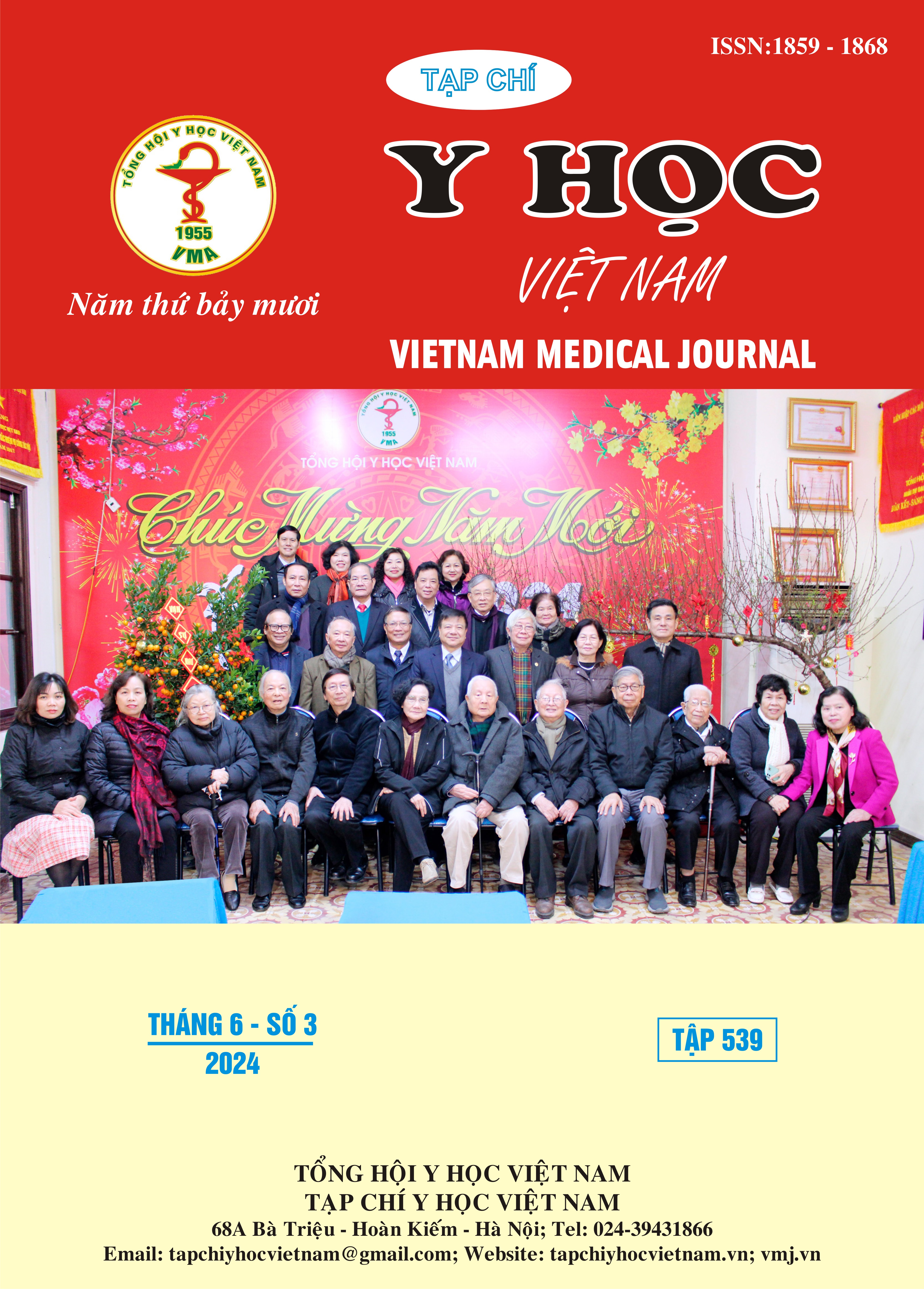EFFECT OF FILLED VOLUME OF CITRATE TUBE 3.8% FOR ROUTINE COAGULATION TESTS, PT AND APTT, ON SYSMEX CA-600
Main Article Content
Abstract
Aims: To study on the effect of blood filling volume of 3.8% citrate tubes, produced in Vietnam, on the the results of routine coagulation tests, PT and aPTT, at Tam Tri Sai Gon General Hospital. Methods: Included a retrospective study on 12 patient cases whose samples were rejected due to citrate tube filled volume < 90% (according to CLSI regulation, 2008) and a prospective study on 10 volunteers provided 3 citrate samples with different filled volume including volume insufficiency < 80%, at minimum required volume 92.5% and fully filled volume 100%. Results: The rejection rate of citrate samples with filling volume < 90% was 0.15% (12/8013), [95% CI: 0.08 – 0.26%]. The PT value of the underfilled sample (< 90%) was prolonged compared to the fully filled sample (2mL) with a mean difference of 6.35 [95%CI: 3.95 – 8.75 seconds], proportional to PT of fully filled samples was 51.6 % [95% CI: 34.6 – 68.6%], p=0.0009. The result was similar to the aPTT of 2.78 [95%CI: 1.75 – 3.8 seconds], proportional to aPTT of fully filled samples was 9.56 % [95% CI: 6.0 – 13.0%], p=0.002. The PT value of the minimum filled samples (92.5%) was longer than that of the fully filled samples (2mL) with a mean difference of 1.42 [95%CI: 0.72 – 2.12 seconds], proportional to PT of fully filled samples was 12.53 % [95% CI: 6.25 – 18.4%], p=0.007. The result was similar to the aPTT of 1.28 [95%CI: 0.69 – 1.87 seconds], proportional to aPTT of fully filled samples was 4.49% [95% CI: 2.41 – 6.52%], p=0.007. Conclusion: For 3.8% citrate tube 2 mL, produced in Vietnam, the filled volume must be full up to 100% to ensure the accuracy of PT and aPTT. The samples that achive the minimum required volume of 92.5% have 5-10% bias in results that need to be noted by the doctors and compared with the patient’s clinical situation. A 3.8% citrate tube 2 mL with filles volume < 90% had to be rejected.
Article Details
Keywords
ống citrate 3.8%, PT, aPTT
References
2. Nataša Gros*, Tadej Klobuˇcar and Klara Gaber. Accuracy of Citrate Anticoagulant Amount, Volume, and Concentration in Evacuated Blood Collection Tubes Evaluated with UV Molecular Absorption Spectrometry on a Purified Water Model. Molecules 2023, 28, 486. https://doi.org/10.3390/molecules28020486.
3. CLSI. Collection transport, and processing of blood specimens for testing plasma-based coagulation assays and molecular hemostasis assays: approved guideline, 5th ed. Wayne, PA:Clinical and Laboratory Standards Institute; 2008. CLSI document H21-A5.
4. Mehmet Senes*, Berrin Bercik Inal, Fehime Benli Aksungar, Ipek Cinaroglu, Pinar Eker, Cigdem Sonmez, Guzin Aykal, et al. TBS preanalytical phase working group survey study – preanalytical phase in coagulation laboratories. Turk J Biochem 2021; 46(1): 13–21. https://doi.org/10.1515/tjb-2019-0512.
5. Grace Bostic, Rebecca Thompson, Stefani Atanasoski, et al. Quality Improvement in the Coagulation Laboratory: Reducing the Number of Insufficient Blood Draw Specimens for Coagulation Testing. Lab Med Fall 2015;46:347-355. DOI:10.1309/LMA4WYN3XFUKELBD
6. Elisabeth H. Adam, Kai Zacharowski, Gudrun Hintereder, et al. Validation of a New Small-Volume Sodium Citrate Collection Tube for Coagulation Testing in Critically Ill Patients with Coagulopathy. Clin. Lab. 2018;64:1083-1089. DOI: 10.7754/Clin.Lab.2018.171008
7. Fiamma Balboni, Stefania Barbui, Marco Gallo, et al. Routine coagulation testing in Vacutainer® Citrate Plus tubes filled at minimum or optimal volume. Diagnosis 2019; aop. Https://doi.org/10.1515/dx-2019-0052.


